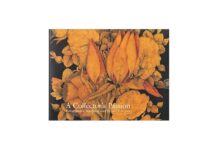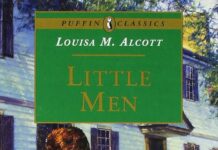In the arid expanse of Australian literature, Jane harper’s The Dry emerges as a haunting narrative where the relentless drought mirrors the parched secrets lurking beneath the surface of a tight-knit community. Unraveling Drought and Deception: A Thoughtful Look at The Dry invites readers to delve deeper into Harper’s intricate weaving of suspense, landscape, and human frailty. This review sets out to explore the nuanced layers of the novel-where environmental hardship and personal turmoil intertwine-offering a balanced examination of its storytelling craft and thematic resonance.
The intricate Weaving of Drought and Mystery in The Dry Setting the Tone for a Suspenseful Outback Experience

Jane Harper’s vivid portrayal of the Australian outback in The Dry is more than just a backdrop; it is indeed an omnipresent character that breathes life into the narrative’s tension. The relentless drought,with its parched earth and cracked rivers,mirrors the internal desiccation of the town’s inhabitants-secrets hidden beneath layers of dust and silence. This environmental scarcity sharpens every interaction,compelling readers to feel the weight of each unsaid word and shadowed glance. The heat does not merely scorch the skin; it slowly strips away the veneer of normalcy, revealing the raw, uneasy truths simmering under an unforgiving sun.
The suspense is skillfully woven through a delicate balance of external and internal conflicts, with key elements that anchor the tone throughout the novel:
- Oppressive Atmosphere: The drought’s harshness creates a suffocating setting where every breath feels heavy and laden with consequence.
- Isolation: The physical and emotional remoteness of the outback amplifies feelings of vulnerability and mistrust among characters.
- Unraveling Secrets: Just as the land fractures under the heat, long-buried deceptions crack open, demanding resolution.
This synergy between setting and story crafts an immersive journey that is as much a psychological exploration as it is indeed a thrilling mystery.
| Element | Symbolism | Effect on Tone |
|---|---|---|
| Drought | Stagnation & Desperation | Creates oppressive tension |
| Outback Isolation | Loneliness & Suspicion | Heightens emotional vulnerability |
| Cracked Earth | Hidden Fractures in truth | Foreshadows unraveling secrets |
Exploring the Complex Characters Caught in the Web of Secrets and Small Town Stigma
Jane Harper’s narrative dives deep into the psyches of characters ensnared by more than just the harsh drought-stricken landscape. Each individual carries silent burdens and hidden motives shaped by the unforgiving social fabric of their small town.The weight of whispered gossip and unspoken truths creates a claustrophobic environment where trust is scarce and loyalties shift like the parched earth beneath their feet. This setting acts as a pressure cooker, amplifying personal secrets and exposing the fragility of human connections strained by years of suspicion and unresolved grief.
The layers of complexity are revealed through nuanced interactions, carefully drawn out in moments both subtle and stark. consider the following traits that define Harper’s principal characters:
- Resilience: the capacity to endure beyond physical hardship, struggling against emotional drought as well.
- Conformity and Rebellion: Balancing the necessity of fitting in with the quiet defiance of those who refuse to be broken.
- Guilt and Redemption: haunted pasts collide with present actions, blurring the line between innocence and culpability.
| Character | Key Secret | Town Role |
|---|---|---|
| Aaron Falk | Past Misunderstandings | Returning Federal Agent |
| Kirsty | Hidden Grief | Community Pillar |
| Lukas | Unspoken Rivalry | Local Farmer |
Harper masterfully intertwines these traits, crafting characters whose inner turmoil mirrors the external desolation of drought. In doing so, she invites us to examine the profound impact of communal judgment and the courage required to confront both nature and neighbor.
how Jane Harper Captures the Relentless Harshness of the Australian Landscape as a Character Itself

In Jane Harper’s narrative, the Australian outback transcends mere backdrop status, evolving into an ever-looming presence that shapes every twist and revelation. The oppressive drought isn’t just weather; it becomes a silent antagonist,stripping away life and hope with unyielding persistence.This harsh environment reflects the inner turmoil of the characters, its cracked earth and wilting trees mirroring secrets as parched and cracked as the land itself. Through vivid descriptions,Harper invests the landscape with a personality - one that is unforgiving,unrelenting,and deeply intertwined with the story’s emotional pulse.
- Scorching heat: often described as almost unbearable, it amplifies tension and despair.
- Barrenness: the sparse vegetation symbolizes isolation and the erosion of trust among neighbors.
- Encroaching silence: punctuated only by rare sounds, emphasizing both physical and psychological emptiness.
By weaving in the landscape’s relentless grip, Harper deepens the narrative structure, making the environment an unspoken character with moods and motives. Her skill lies in turning natural elements into narrative devices: the dust storms that blind, the water shortages that suffocate, all work seamlessly to heighten suspense and accentuate the sense of desperation. The table below illustrates key elements of the Australian landscape in The Dry alongside their metaphorical weight within the story, reflecting both setting and symbolism.
| landscape Element | Symbolic Role | Effect on Narrative |
|---|---|---|
| endless Drought | Depletion and despair | Creates suffocating tension |
| Crumbling Farmland | Decay of community and relationships | Highlights fractured alliances |
| Isolated Homesteads | Loneliness and vulnerability | Amplifies character isolation |
A Deep Dive into the Themes of Deception, Loss, and the Burden of Past Traumas in The Dry

Jane Harper’s narrative masterfully weaves together the twin shadows of deception and loss, crafting a story where truth is as parched as the unforgiving landscape it unfolds within. The characters carry secrets like heavy water jugs, their pasts ironically as arid and brittle as the land they traverse. This creates a tension that is palpable, where every revealed lie peels back layers of grief and betrayal, exposing the raw wounds beneath a community’s fractured facade. Harper doesn’t just tell a crime story; she illustrates how deceit can fracture bonds and deepen loneliness,transforming loss into a living,breathing ghost that haunts both the land and its inhabitants.
The burden of past traumas is not merely background noise but a driving force that shapes motivation and destiny in The Dry. Each character grapples with history’s weight in different ways, be it through avoidance, confrontation, or denial. Their responses to trauma illuminate the complex human psyche entwined with survival under relentless hardship. Consider the emotional terrain such characters navigate:
| Response to Trauma | Effect on Character | Symbolic Reflection |
|---|---|---|
| Suppression | Emotional isolation | Cracked earth hiding moisture |
| Confrontation | Risk of redemption | New growth after drought |
| Denial | Fragile hope | Mirage of rain on horizon |
- Deception acts as both shield and weapon, complicating relationships.
- Loss permeates the narrative, haunting the collective memory of the town.
- Past traumas are catalysts, forcing characters to reckon with their inner droughts.
The Narrative Pace and Structure That Keeps Readers Gripped from Start to Finish Without Overwhelming

Jane Harper masterfully balances a intentional, measured pace with moments of brisk tension, ensuring readers remain invested without feeling rushed. The narrative unfolds gradually, like the slow creep of drought over the arid Australian landscape, allowing the suspense to simmer beneath the surface. This careful modulation between introspective scenes and sharp, revealing dialogues prevents overwhelm, drawing readers deeper into the emotional and psychological layers of the story. Subtle shifts in tempo frequently enough signal shifts in perspective or escalating stakes, guiding the reader smoothly through the plot’s intricate twists.
The structural design further complements this rhythmic storytelling by weaving together parallel timelines and multiple viewpoints, providing comprehensive insights without fragmentation. Elements such as flashbacks and local lore are interspersed thoughtfully, enriching the present-day inquiry with context and emotional resonance. Here’s a look at how key structural features maintain narrative momentum:
| structural Element | Function | Effect on Reader |
|---|---|---|
| Interweaving Timelines | Juxtaposes past secrets with present clues | Builds suspense and deepens mystery |
| Multiple Perspectives | Offers diverse viewpoints of events | Enhances empathy and engagement |
| Strategic flashbacks | Reveals critical backstory gradually | Keeps curiosity piqued |
| Local Colour & Lore | Anchors story in authentic setting | Evokes atmosphere and mood |
Unpacking the Symbolism Behind the Title and Its Reflection on Both Environment and Human Nature
The title The Dry serves as a powerful metaphor that intertwines the barren landscape with the emotional drought experienced by the characters. On one level, it reflects the harsh, relentless environment of rural Australia-a place where the parched earth becomes a silent witness to human despair and resilience. The drought symbolizes more than just a lack of rain; it embodies a depletion of hope and the slow decay of communal bonds.In this way, Jane Harper masterfully uses the unforgiving land as a mirror, highlighting how nature’s desolation echoes the internal struggles of isolation, secrets, and suppressed guilt within the human psyche.
The symbolism stretches beyond environment into the fabric of human relationships, revealing a landscape of hidden tensions and emotional barrenness. The crippling dryness becomes a backdrop against which themes of deception, mistrust, and denial unfold.In The Dry, the absence of water parallels the scarcity of truth and openness among the characters, suggesting that drought is not solely environmental but psychological as well. This theme is underscored by the narrative’s interplay between the seen and unseen, the spoken and the silent:
- Water as a symbol of life, purity, and renewal is starkly missing, intensifying feelings of stagnation.
- Deceptive appearances in the community highlight how dryness manifests as emotional coldness.
- Secrets and lies create a drought of trust, reflecting fractured human connections.
| symbol | Interpretation | Reflection |
|---|---|---|
| parched Earth | Environmental hardship | Harshness of external world |
| Drought | Emotional emptiness | Inner turmoil and loneliness |
| hidden Waterways | Unseen truths | secrets beneath the surface |
The Subtle Use of Local Dialect and Dialogue to Enhance Authenticity and Immersion in the Story
Jane Harper’s masterful integration of local dialect and dialogue serves as a cornerstone for grounding the narrative in its rural Australian setting. Characters speak with a natural cadence that reflects the harshness of their environment and the tight-knit fabric of their community. These linguistic choices do more than provide texture; they invite readers to eavesdrop authentically on conversations, capturing the nuances of regional speech. The deliberate use of colloquialisms and idiomatic expressions makes the interactions feel lived-in and immediate, bridging the gap between fiction and reality. By weaving subtle yet distinct local color into each exchange, Harper enriches character growth and sets an unmistakable tone of place.
To illustrate the impact of these choices, consider how key phrases enhance immersion:
- “Dry as a dead dingo’s donger”-evokes the unforgiving drought conditions in a uniquely Australian idiom.
- “No worries, mate”-conveys everyday casual resilience and community solidarity.
- “Flat out like a lizard drinking”-captures the frantic pace beneath the surface calm.
| Expression | Meaning | Effect |
|---|---|---|
| “Shoot through” | Leave quickly | Builds tension and urgency |
| “Fair dinkum” | Genuine, truthful | Establishes trustworthiness or doubt |
| “Bloody oath” | Absolutely, definitely | Adds emotional emphasis |
These idiomatic anchors not only root the story in its specific locale but function as subtle narrative tools that deepen readers’ emotional investment. They lend the story a textured layer of realism, where speech patterns become a living part of the plot’s landscape, drawing readers into the relentless heat and intricate lives that define The Dry.
Critical Moments That Define the Emotional Core and Moral Complexity of the Protagonist’s Journey
Luke hadler’s journey is punctuated by moments that not only reveal his resilience but also expose the moral ambiguities he grapples with. faced with the suffocating drought that ravages his hometown, Luke is forced to confront his own biases and the oppressive expectations of a tight-knit community. The emotional weight of returning to a place shadowed by loss drags him deep into a nexus of personal grief and communal mistrust. As Luke delves into the mystery surrounding his childhood friend’s death, his steadfast dedication fractures under the pressure of unveiling uncomfortable truths. Here, Harper masterfully threads internal conflict and external judgment to craft a protagonist whose emotional core is as parched and cracked as the land he returns to.
- Moment of Reckoning: Luke discovering hidden secrets about his past and the town’s unspoken wounds.
- Community Confrontations: The tension between loyalty to family and the pursuit of justice.
- Personal Sacrifice: Luke’s willingness to alienate himself to protect those he loves.
The moral complexity emerges vividly as Luke’s choices blur the line between right and wrong, illuminating the shades of gray inherent in human nature. decision-making becomes less about clear-cut justice and more about survival,forgiveness,and the nuanced navigation of truth. This tension is elegantly captured in the table below, which outlines key dilemmas Luke faces and the emotional resonance each carries:
| Dilemma | Emotional Impact | Ethical Challenge |
|---|---|---|
| Confronting family secrets | Shame and mistrust | Loyalty vs. honesty |
| Investigating a close friend | Guilt and doubt | Justice vs.compassion |
| Exposing community wounds | Isolation and courage | Preservation vs. truth |
Why The Dry Balances Thrilling Crime Elements with Thoughtful Social Commentary for Broader Appeal
The Dry captivates readers by weaving heart-pounding suspense with a keen examination of societal fissures, creating a narrative that resonates far beyond the boundaries of typical crime fiction. Jane Harper masterfully embeds the rural drought’s harsh realities into the investigation’s fabric,subtly exposing the community’s simmering tensions and long-standing grudges. This interplay adds layers of meaning, transforming the novel from a simple whodunit into a mirror reflecting broader issues like economic hardship, isolation, and the struggle for survival against unforgiving natural and human forces.
One of the novel’s strengths lies in its ability to balance gripping plot twists with a quiet, reflective critique of contemporary life in drought-stricken Australia.The emotional distances between characters become metaphors for the social distances that crop up in stressed communities. Below is a brief overview of how The Dry intertwines its crime elements with social commentary:
| Element | Crime Aspect | Social Commentary |
|---|---|---|
| Drought | backdrop for mystery and tension | Symbolizes scarcity and survival challenges |
| Small-town secrets | Motivation for crimes and conflicts | Highlights isolation and mistrust |
| Character conflicts | driving force of the plot | Explores fractured community dynamics |
- Suspense ignites the reader’s curiosity,keeping engagement high.
- Social ideals provoke thoughtful reflection on real-world issues.
- Emotional depth fosters empathy, making characters’ struggles feel authentic.
Recommendations for Readers Who Appreciate Atmospheric Mysteries with a Strong Psychological Edge
For those drawn to narratives where every shadow seems to whisper secrets and the human psyche is as arid and cracked as the land itself, this novel offers a profound exploration. It masterfully intertwines the relentless tension of a small-town mystery with the intricate unraveling of emotional trauma, ensuring that suspense arises not just from external threats, but from the inner turmoil of its characters. Readers who savor the slow build of atmospheric dread-hanging thick like dust in the drought-stricken landscape-will find themselves engrossed in a story where the environment becomes almost a character in its own right, reflecting fractured relationships and buried truths.
If your tastes lean toward stories that balance the eerie stillness of isolation with sharp psychological insight, consider these standout titles to further quench your craving for atmospheric complexity:
- “In the Woods” by Tana French – a haunting dive into memory and identity.
- “The Silent Patient” by Alex Michaelides – a chilling psychological puzzle with deeply layered characters.
- “Sharp Objects” by Gillian Flynn – where familial wounds cut as deeply as the plot twists.
- “The Shadows” by Alex North - a gripping tale of past nightmares bleeding into present fears.
| Recommended Book | Psychological Focus | Atmospheric Element |
|---|---|---|
| In the Woods | Memory & Identity | Misty, Woodland isolation |
| The Silent Patient | Trauma & Silence | Claustrophobic Apartment |
| Sharp Objects | Family Dysfunction | Small-Town Decay |
| the Shadows | Fear & Past Haunting | Foggy Urban Landscape |
How The Dry Stands out Among Contemporary Australian Crime Novels in Style and Substance
The Dry carves a distinctive niche within the crowded realm of Australian crime fiction through its seamless fusion of atmospheric storytelling and intricate character development. Unlike many contemporaries who lean heavily on plot twists or gritty urban backdrops, Jane Harper opts for the relentless, sunbaked tension of the Australian outback to create a palpable sense of isolation and decay. This setting is not just a backdrop but a living, breathing element that shapes the narrative’s emotional depth. Through her minimalist prose and acute observational eye,Harper crafts a story where silence,drought,and simmering secrets pulse beneath the surface of a seemingly serene rural community.
Stylistically, Harper’s work incorporates a subtle, literary elegance that elevates The Dry above typical genre fare.the novel refuses to rush,instead allowing the layers of deception and grief to unfold methodically,rewarding patient readers with moments of profound insight. The following elements distinctly separate it from its peers:
- Authentic regional voice capturing the nuances of rural Australian life.
- Balanced pacing that intertwines personal trauma with murder mystery.
- Complex protagonist burdened with moral ambiguity and past guilt.
- Thematic depth exploring drought as both environmental and emotional drought.
- Atmospheric tension derived from natural elements rather than urban chaos.
| Aspect | The Dry | Typical Australian Crime Novel |
|---|---|---|
| Setting | Rural drought-stricken town | Urban or coastal city |
| Atmosphere | Sparse,intense,insular | Fast-paced,gritty,crowded |
| Character Focus | Emotionally complex,reflective | Action-driven,external conflict |
| Theme | Interwoven environmental and psychological tension | Crime and justice-centric |
The Enduring Impact of The Dry and its Invitation to Reflect on Human Resilience Amid Unyielding Circumstances
The Dry masterfully captures the paradox of a parched landscape teeming with untold emotional depth, inviting readers to witness resilience woven into the very fabric of hardship. harper doesn’t just chronicle a drought’s devastation - she exposes how unyielding environmental and social conditions shape human behavior, relationships, and survival instincts. The oppressive heat and cracked earth become metaphors for buried secrets, while the quiet persistence of those who endure invites reflection on the complex interplay between despair and determination.
- Resilience Amplified: Characters reveal strength not through grand gestures, but in subtle, daily acts of coping and connection.
- Nature as Catalyst: Harsh climatic conditions echo internal struggles, blurring the line between environment and emotion.
- Community Under Pressure: Tensions arising from scarcity expose fractures yet also the potential for solidarity.
Examining these layers reveals a timeless meditation on endurance, where the “dry” becomes both literal and symbolic - a space where mental fortitude battles isolation and societal expectations. The novel’s portrayal of human resilience encourages readers to consider how, amid relentless adversity, hope and reconciliation may still flourish, offering a powerful mirror for contemporary challenges.
| Aspect | Symbolism | Impact |
|---|---|---|
| Drought | Parched earth & silent suffering | Heightened tension & urgency |
| Secrets | Cracks beneath the surface | Strained relationships |
| Community | Fragile yet interconnected | Conflict & reconciliation |
A Closer Look at Jane Harper’s Background and How Her Experiences Shape the Narrative Voice and Themes
Jane Harper’s upbringing in rural Australia profoundly impacts her storytelling, imbuing her narratives with authenticity and a vivid sense of place. Growing up amid vast, drought-stricken landscapes, Harper intimately understands the unique challenges faced by small-town communities. Her firsthand experience breathes life into the harsh environmental conditions that permeate her work, making nature almost a character itself. Moreover, her background as a journalist lends a meticulous attention to detail and an investigative approach, evident in the layered mysteries and nuanced character development found within the story.
- Deep connection to rural settings: Authentic descriptions of drought and isolation
- Journalistic precision: Sharp, concise narrative style and unfolding of complex secrets
- Focus on human resilience: Themes of community, survival, and trust under strain
| Experience | Narrative Influence | Thematic Reflection |
|---|---|---|
| Rural upbringing | Authentic setting | Isolation & hardship |
| Journalism career | Detail-oriented writing | Truth-seeking & deception |
| Australian culture | Local dialects & customs | Community bonds & conflict |
The Dry is more than just a taut mystery set against the unforgiving backdrop of drought-stricken Australia; it is a layered exploration of human frailty, secrets, and resilience. jane Harper’s storytelling unspools with a deliberate pace that allows readers to soak in the oppressive heat, both environmental and emotional.Whether you find yourself captivated by the twists or moved by the characters’ struggles, The Dry offers a thoughtful journey through deception’s many faces. Its a novel that lingers long after the final page, inviting quiet reflection on the shadows we all carry beneath the surface.








